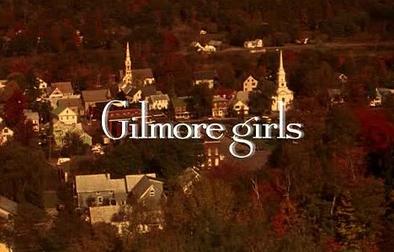Table of Contents
In the landscape of television history, Gilmore Girls holds a distinct and cherished place. Premiering in 2000, the show was a unique blend of snappy dialogue, heartfelt relationships, and an abundant peppering of pop culture references that resonated deeply with audiences. Centered around the tight-knit, often quirky relationship between single mother Lorelai and her precocious daughter Rory, the narrative was set against the idyllic backdrop of Stars Hollow, a fictional small town teeming with colorful characters and heartwarming stories.
Upon its debut, Gilmore Girls was met with critical acclaim and rapidly developed a dedicated fanbase. Its portrayal of a multifaceted mother-daughter bond, combined with themes of ambition, love, and friendship, struck a chord with viewers of all ages. Unlike other shows of its time, it neither succumbed to the stereotypical portrayal of teenage angst nor diluted the complexities of adult life. This dual appeal led to a wide audience reach, ranging from teenagers identifying with Rory’s school dilemmas to adults resonating with Lorelai’s challenges in parenthood and romance. Its legacy, as we’ll explore, has left an indelible mark on popular culture, inspiring future TV series, fashion trends, and even social dialogues.

The Deep-Seated Themes of Gilmore Girls and Their Cultural Resonance
At the heart of Gilmore Girls lies a rich tapestry of themes that elevate the show from a mere family drama to a cultural touchstone. It isn’t merely the quick wit and humor that define the show, but also the intricate layers of human relationships and aspirations that are explored.
First and foremost is the portrayal of mother-daughter relationships. Lorelai and Rory’s bond isn’t just emblematic of familial love; it’s a testament to the complexities and nuances of generational ties. Their dynamic, marked by camaraderie, mutual respect, and the occasional clash of opinions, transcends the conventional parent-child relationship, showcasing a friendship that many yearned to emulate. This portrayal debunked myths around teenage rebellion, suggesting that respect and open dialogue could bridge generational gaps.
Beyond familial ties, Gilmore Girls delved deep into the realms of friendship and romance. From Lorelai’s tumultuous relationships and Rory’s youthful romances to the enduring friendships with characters like Lane and Sookie, the show highlighted the beauty and trials of human connections. It underscored the idea that while romantic relationships might ebb and flow, friendships, especially those forged in the fires of youth, often endure life’s harshest storms.
Ambition and personal growth are equally pivotal themes. Rory’s aspirations to be a journalist and Lorelai’s journey from a maid to an inn owner demonstrate the power of determination and resilience. Their individual quests for success, framed within the challenges they face, serve as inspirations for countless viewers navigating their paths.
Lastly, the charm of small-town life, embodied by Stars Hollow, added an element of nostalgia and community to the narrative. In an era of burgeoning urbanization and digital detachment, Stars Hollow offered a picturesque retreat. It celebrated community, seasonal festivals, and the idea that everyone, no matter how quirky, had a place to belong.
In weaving these themes together, Gilmore Girls offered viewers more than entertainment; it presented a mirror to society, reflecting both its aspirations and its vulnerabilities.
Crafting a Lasting Cultural Imprint
Few television shows have managed to seep into the cultural zeitgeist quite like Gilmore Girls. Beyond its poignant themes and memorable characters, the show’s influence has had an unmistakable ripple effect on popular culture, starting with its iconic catchphrases and witty dialogue. Lorelai and Rory’s caffeine-infused banter, filled with quick quips and humorous observations, gave birth to catchphrases like “Oy with the poodles already!” that fans gleefully integrated into everyday conversations.
The series was also a treasure trove of pop culture references, seamlessly weaving in mentions of music, movies, and literature. From nods to the indie rock scene to Rory’s expansive reading list and Lorelai’s affinity for classic films, Gilmore Girls became a melting pot of cultural homage. These references not only served as an entertaining Easter egg hunt for viewers but also bridged generational divides, introducing younger fans to timeless classics and sparking renewed interest in them.
Furthermore, the show’s unique blend of heartwarming drama and sharp wit paved the way for subsequent television series. Shows like Parenthood and Jane the Virgin borrowed elements from the Gilmore blueprint, emphasizing tight-knit family dynamics, humor-infused situations, and layered character development. They acknowledged the gold standard set by Gilmore Girls in creating relatable, real-world situations with a dash of whimsy and drama.
Gilmore Girls did more than just entertain; it became a cultural lexicon, setting trends in dialogue, reintroducing audiences to a vast array of cultural touchstones, and influencing the fabric of future television narratives.
The Gilmore Fashion Legacy
In the vast world of television, few series have showcased style as distinctively and influentially as Gilmore Girls. Lorelai and Rory Gilmore, the beloved mother-daughter duo, weren’t just protagonists navigating life’s ups and downs; they were also inadvertent style icons, shaping early 2000s fashion and leaving an indelible mark that transcends the show’s original air dates.
Lorelai’s eclectic style—a fusion of bohemian flair, rocker chic, and a splash of classic elegance—became a template for many. Her penchant for vibrant prints, layered ensembles, and unique accessories was emblematic of a woman who was confident and unafraid to stand out. Meanwhile, Rory’s transition from a high school student to a college grad and budding journalist was mirrored in her evolving wardrobe. Beginning with preppy uniforms and knee-high socks, her style matured into a sophisticated blend of classic and contemporary.
Beyond the immediate fandom, the fashion world took notice. The Gilmore-inspired trends were evident in stores during the show’s prime, with a resurgence of boots, denim jackets, and layered outfits. Even in today’s fashion landscape, which often looks back for ‘retro’ inspiration, elements of the Gilmore aesthetic persist. Vintage tees paired with contemporary skirts or classic cardigans worn over modern silhouettes pay homage to the show’s unique sartorial blend.
The enduring impact of Gilmore Girls is not merely limited to dialogues and cultural references. In the realm of fashion, the show is a testament to how style, much like good storytelling, remains timeless, evolving with eras but always retaining its original charm.
Championing Female Empowerment On-Screen
Throughout its seven-season run, Gilmore Girls stood as a beacon of female empowerment, defying stereotypes and championing the multifaceted nature of womanhood. At its core, the show was about women — their ambitions, their relationships, and their determination to carve out a unique path in the world.
Leading the charge were the indomitable Lorelai and her prodigious daughter, Rory. These characters, while contrasting in personality, were united in their resilience and ambition. Lorelai’s journey from a teenage mother living in a shed to a successful inn owner is a testament to tenacity and determination. Rory, with her insatiable thirst for knowledge and a clear vision for her future, defied the limiting expectations often set for young women. Together, they embodied the spirit of self-reliance and ambition.
The show’s narrative frequently delved into the exploration of female agency. Whether it was Lorelai navigating the challenges of business or Rory making decisions about her education and career, Gilmore Girls showcased women making choices, both popular and controversial, but always their own.
Moreover, the portrayal of single motherhood through Lorelai was groundbreaking. She was neither pitied nor marginalized but celebrated for her strength, wit, and unwavering love for her daughter. In Lorelai, audiences saw the complexities of motherhood: the sacrifices, the joys, the challenges, and the rewards.
In an entertainment landscape often dominated by one-dimensional female characters, Gilmore Girls brought depth, strength, and nuance, reshaping the portrayal of women on television and inspiring generations to embrace their power and potential.
Reshaping the Landscape of Modern Television
When Gilmore Girls graced our screens at the turn of the century, it brought with it a refreshing change, redefining the rhythm and substance of television dialogues. This transformative impact, fondly termed as The Gilmore Effect, has since influenced an array of series, cementing the show’s legacy in the annals of TV history.
One of the standout features of Gilmore Girls was its razor-sharp, fast-paced dialogue. The rapid-fire exchanges between Lorelai, Rory, and other characters were not just entertaining but also intellectually stimulating. Post-Gilmore, there’s been a noticeable uptick in shows adopting a similar cadence, with creators recognizing the appeal of witty, dense dialogues that require viewers to listen intently and think quickly.
Beyond its linguistic influence, the show revolutionized the portrayal of mother-daughter dynamics on screen. The Lorelai-Rory relationship, with its blend of familial bonds and friendship, became a blueprint for subsequent series. Shows began to delve deeper into the complexities of this unique bond, moving away from stereotypical generational conflicts to more nuanced, relatable narratives.
Furthermore, Gilmore Girls was a precursor to the wave of female-driven series that dominate today’s TV landscape. Its success proved that stories centered around strong, multifaceted female characters had both a market and a fervent audience. Series like Fleabag, The Marvelous Mrs. Maisel, and Big Little Lies owe a nod to the trailblazing spirit of Gilmore Girls, which demonstrated the power and potential of female narratives.
The Gilmore Effect is a testament to how one show can inspire a paradigm shift, pushing the boundaries of storytelling and character development in television.
Stars Hollow and the Allure of Small-Town Nostalgia
The small town of Stars Hollow, with its quaint streets, quirky residents, and endless community events, stands emblematic of the nostalgia many feel for simpler times and close-knit communities. Gilmore Girls masterfully captures this charm, and in doing so, has ignited a renewed interest in the depiction of small towns in television.
Stars Hollow is more than just a backdrop for Lorelai and Rory’s adventures; it’s a vibrant character in its own right. Each diner visit, town meeting, and eccentric festival paints a vivid picture of a town where everyone knows your name and is ready with a pot of coffee or unsolicited advice. This appeal lies in its utopian aura, a refuge from the frenetic pace of urban life, where the values of community and togetherness reign supreme.
Following the success of Gilmore Girls, television saw a resurgence of shows set against the backdrop of charming small towns. Series like Schitt’s Creek, with its hilarious and heartwarming portrayal of a once-wealthy family finding their place in a quirky town, and Hart of Dixie, which juxtaposes big-city medicine with southern town dynamics, owe their inspiration to the precedent set by Stars Hollow.
At the heart of these narratives is an emphasis on community. The townsfolk, with their idiosyncrasies and shared histories, and the ubiquitous hometown events – from dances to fundraisers – underline the essence of belonging and the magic of shared experiences.
In an age of digital disconnection, the allure of Stars Hollow and its successors remind viewers of the joy and comfort found in genuine human connections and the simple pleasures of small-town life.
Navigating the Social Tapestry with Nuance and Depth
While Gilmore Girls is often hailed for its wit and familial dynamics, it equally stands as a nuanced commentary on myriad social issues that resonate deeply with its audience. Beyond the coffee and quick banter, it delves into the heart of society’s intricacies, enriching the television landscape.
One of the show’s central underpinnings is its exploration of class differences. The palpable tension between Lorelai and her affluent parents, Richard and Emily, provides a lens into the complexities of socioeconomic disparities. Lorelai’s decision to step away from her privileged upbringing, juxtaposed with Rory’s ambitious pursuit of education at elite institutions, underscores the delicate balance of ambition, educational aspirations, and societal expectations.
The series also delves deeply into diverse relationship dynamics. Lane’s strict, traditional upbringing, marked by her mother’s conservative Korean values, contrasts starkly with Rory’s more liberal and free-spirited upbringing. This juxtaposition offers a multi-faceted view of adolescence, challenging viewers to understand and empathize with varying cultural perspectives.
Moreover, Gilmore Girls doesn’t shy away from the messiness of romantic relationships and friendships. From Lorelai’s complicated relationships with Luke and Christopher to Rory’s youthful romantic entanglements, the show presents love in all its flawed glory. Friendships, too, are presented with depth, be it the steadfast bond between Rory and Lane or the dynamic camaraderie between Lorelai and Sookie.
In its essence, Gilmore Girls transcends its era, initiating conversations that remain relevant today. By embedding social issues within its narrative, it challenges viewers to reflect, understand, and engage in discussions that span beyond the confines of Stars Hollow.
Fandom, Revival, and Real-world Celebrations
The zeitgeist of Gilmore Girls extends far beyond its original run, a testament to its endearing charm and the undying passion of its fanbase. This ardent fandom, fueled by nostalgia and love for the Gilmore duo, played a pivotal role in resurrecting the show for a new generation.
The clamor for more Gilmore was loud and clear, and in an era where streaming giants were taking center stage, Netflix heeded the call. Gilmore Girls: A Year in the Life was their answer, an ambitious revival that promised to revisit the lives of beloved characters. While reception was mixed, with some praising its nostalgic charm and others critiquing its departure from the original’s essence, the impact was undeniable. The revival not only introduced Stars Hollow to new viewers but also rekindled the flame for long-time fans, sparking debates and discussions about the characters’ paths.
Beyond the screen, the fervor for Gilmore Girls permeates the real world. The Gilmore Girls Fan Fest, set in Washington Depot, Connecticut—the very town that inspired Stars Hollow—allows devotees to immerse themselves in the magic of the series. With trivia games, panel discussions, and the opportunity to stroll through the streets reminiscent of the iconic town, the festival is a testament to the show’s enduring legacy.
In the pantheon of television, few shows experience such a fervent revival and fandom-driven celebrations. Gilmore Girls, with its blend of heart, humor, and cultural relevance, undeniably holds a unique and cherished place in TV history.
An Enduring Legacy in Pop Culture
As the curtains closed on Stars Hollow, the cultural ripples set forth by Gilmore Girls continued to resonate, illustrating the show’s timeless appeal. Launched as a simple tale of a mother-daughter duo navigating life’s challenges, it has since become a touchstone in the television landscape.
The intricate tapestry of themes—from personal ambitions and complex relationships to societal nuances—imbues the series with a depth that remains relevant across generations. It’s a reflection of the show’s ability to transcend its era, weaving narratives that touch the universal chords of human experience.
Even as the television realm evolves, the influence of Gilmore Girls is evident. Its pioneering blend of fast-paced dialogue, strong female protagonists, and the portrayal of a tight-knit community has inspired a plethora of series that followed. Moreover, its seamless integration of pop culture references has become a blueprint for shows aiming to strike a balance between contemporary relevance and lasting impact.
In essence, Gilmore Girls stands as more than just a show; it’s a cultural phenomenon. Its legacy, carried forth by passionate fans and evident in modern storytelling, underscores its indelible mark on television and popular culture, proving that the tales from Stars Hollow are truly evergreen.


